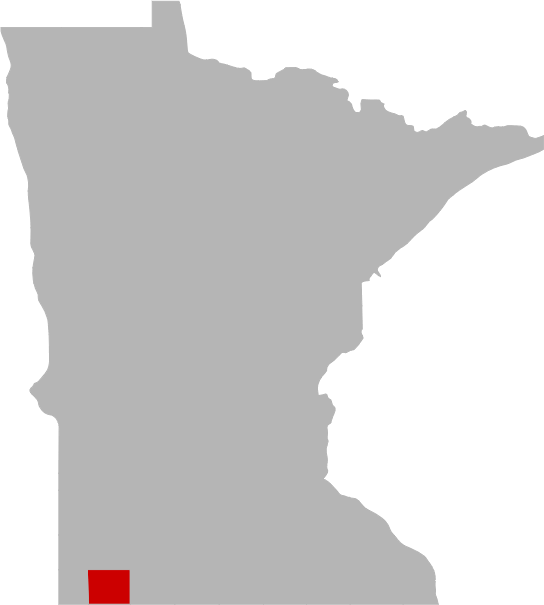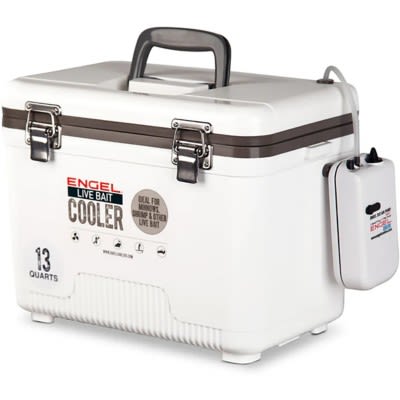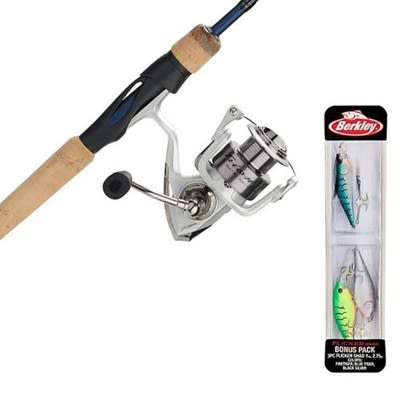Today's Best Fishing Times
Get the best fishing times for West Graham Lake with Lake-Link's Fishing Forecast. SEE MORE


Share Your Catch & Win!
Frequently Asked Questions About West Graham Lake, MN
- How big is West Graham Lake?
- How deep is West Graham Lake?
- What kind of fish can you catch in West Graham Lake?
- What are the closest cities to West Graham Lake?
- Are there places to stay in the West Graham Lake area?
- Are there boat launches on West Graham Lake?
- Are there places to eat and drink near West Graham Lake?
- What is the average air temp for West Graham Lake?
- Are there any state parks near West Graham Lake?
How big is West Graham Lake?
How deep is West Graham Lake?
What kind of fish can you catch in West Graham Lake?
Other fish species in the lake include Fathead Minnow, Green Sunfish, Hybrid Sunfish, Johnny Darter, Orangespotted Sunfish, Quillback, River Carpsucker and White Sucker.
What are the closest cities to West Graham Lake?
Are there places to stay in the West Graham Lake area?
More Lodging Options
Are there boat launches on West Graham Lake?
Are there places to eat and drink near West Graham Lake?
History & Status of the Fishery
INTRODUCTION
West Graham is a 515-acre lake located approximately 8 miles southeast of the city of Fulda in Murray County. West Graham Lake is a Minnesota Department of Natural Resources class 43 lake that has a maximum depth of 8.0 feet and 3.65 miles of shoreline. The substrate is a mixture of sand and gravel along the border with muck and detritus in the deeper water areas. The watershed-to-lake ratio (watershed acres-to-lake acres) is 21-to-1 indicating medium to large size watershed draining into the lake. The lake is connected to several lakes including Fulda Lake upstream and East Graham Lake downstream and fish movement can take place among the lakes. A partial winterkill was suspected to have occurred during the winter of 2013-2014 when oxygen levels dropped to 0.4 parts per million (ppm) by March of 2014. A spring winterkill assessment in April 2014 indicated that little to no winterkill occurred although some dead Common Carp, Bigmouth Buffalo, and Channel Catfish were observed by fisherman along the shoreline after the ice went out. However, each of those species were still found in good numbers in the lake during the spring winterkill assessment. West Graham is managed primarily for Walleye while Black Crappie, Channel Catfish, and Yellow Perch are managed as secondarily. Walleye fry are stocked 2 of 3 three years with the last stocking in 2014 and the next 2 stockings in 2015 and 2017. Channel catfish fingerlings were last stocked in 2004 in response to a partial winterkill in 2000-01 and future stocking has been discontinued.
WALLEYE
The walleye gill net catch rate (# per gill net) of 8.33 in 2014 was within the normal range of 2.28 to 18.06 for class 43 lakes, but below the long term average of 10.6 fish per gill net and well below the long range management goal of 15 fish per gill net. The historical gill net catch rates over the last decade have all been below the management goal. The catch rate was 4.00 in 2010, 11.67 in 2006, and 3.00 in 2002. Normal catch rate ranges developed for Walleye in class 43 lakes within the Windom Fisheries Management Area indicate that the catch rate should more realistically be between 2.33 and 13.33 fish per gill net. West Graham is within that range and historical catch rates indicate a relatively stable population over time. Lengths of Walleye sampled in gill nets in 2014 ranged from 12.3 to 26.6 inches with a mean length of 16.0 inches. The Walleye population had a balanced size distribution and the health of the fish in the sample was good indicating a healthy population. The size structure metrics meet the management goal of maintaining a Walleye population with a balanced size structure which allows for consistent availability of catchable size fish from year-to-year. Five year classes of walleye were sampled with fair growth. Age 3 Walleye averaged 14.0 inches, Age 4 Walleye averaged 15.7 inches, and Age 5 Walleye averaged 20.8 inches. The Age 2, 3, and 4 Walleyes sampled were likely a result of walleye fry stocking in 2010, 2011, and 2012. The 2006 and 2009 year classes (Age 5 and 8) were not stocked in West Graham Lake and were likely a result of natural reproduction (2006) or fish that swam into West Graham from Fulda Lake upstream or East Graham Lake downstream. Heavy rains during the fall of 2010 resulted in many Largemouth Bass and Walleye drifting downstream from Fulda Lake. Based on electrofishing below the Fulda dam and reports from anglers on West Graham, it is likely many of these fish made it into West Graham.
BLACK CRAPPIE
The black crappie trap net catch rate of 0.25 in 2014 was below the normal range of 1.17 to 20.50 for class 43 lakes and well below the long term average of 12.56 fish per trap net. In addition, the 2010 catch rate was only 0.22 fish per trap net. Prior to 2010, trap net catch rates were 31.67 in 2006 and 8.75 in 2002. Successive low catch rates in 2010 and 2014 indicate a potential collapse in a fishable population to a population that is characterized by several individuals that may be reproducing unsuccessfully. Only two black crappie, 4.33 and 11.50 inches in length, were sampled during the assessment. The majority of black crappie sampled in 2006 were age three or older and many have likely died from natural mortality by the time the 2014 assessment was completed. The lack of year classes of Black Crappie in the 2014 assessment adds credibility to the concern of a lack of natural reproduction between 2006 and 2014. Additional stocking may be necessary to boost the population.
CHANNEL CATFISH
The channel catfish gill net catch rate was 4.33 in 2014 compared to 4.33 in 2010 and 9.33 in 2006. No statewide normal catch rate ranges exist for Channel Catfish; however normal catch rate ranges have been developed for class 43 Windom Area Management Lakes. The normal catch rate range for class 43 Windom Area Management Lakes is 0.00 to 3.00 per gill net indicating that the catch rates in West Graham are particularly high. All channel catfish aged in the 2006 survey were the result of a yearling stocking in 2001. Channel catfish were not aged in 2010 but were likely from the 2001 or 2004 stocking. Channel catfish were not aged in 2014 as well, but larger fish were likely from the 2004 stocking with smaller fish from natural reproduction. Total lengths of channel catfish sampled in our gill nets in 2014 ranged from 14.7 to 21.5 inches with a mean of 18.0 inches. The Channel Catfish population had an overall size structure that was dominated by larger fish, however, the health of the fish was good indicating fish are finding adequate food. The Channel Catfish population appears to be maintaining itself and thriving even though the DNR has not stocked Channel Catfish in West Graham Lake since 2004.
YELLOW PERCH
The yellow perch gill net catch rate of 2.67 per net in 2014 was within the normal range of 2.65 to 25.00 for class 43 lakes but below the long term catch rate average of 3.81 per gill net. The gill net catch rate was 5.00 in 2010, 3.67 in 2006, and 5.33 in 2002 indicating a relatively stable population over the past decade. Lengths of yellow perch sampled in gill nets in 2014 ranged from 6.50 to 11.50 inches with a mean length of 9.47 inches. The yellow perch population had a balanced size distribution and the fish were in good health indicating the population was in excellent condition in 2014.
OTHER NON-MANAGED SPECIES
The Black Bullhead gill net catch rate of 32.00 in 2014 was equivalent to the lower normal range value for class 43 lakes and exactly the same as the 2010 catch rate of 32.0 per gill net. The 2014 gill net catch rate was also below the long term average of 60.58 fish per gill net. Lengths of Black Bullhead sampled in gill nets in 2014 ranged from 7.32 to 11.89 inches with a mean length of 9.08 inches.
The Common Carp trap net catch rate of 3.25 per trap net was within the normal range of 1.00 to 5.51 for class 43 lakes but below the long term average of 5.22 per trap net. The trap net catch rate was 0.56 per net in 2010, 3.56 per net in 2006, and 8.88 per net in 2002. Lengths of Common Carp sampled in trap nets ranged from 18.82 to 28.15 inches with a mean length of 22.84 inches.
West Graham is not managed for Northern Pike and has not been stocked with Northern Pike since 1988. East Graham; however, is managed for Northern Pike and the fish that are found in West Graham have likely swam in from East Graham or have come from Fulda Lake upstream where Northern Pike are also managed. The Northern Pike gill net catch rate of 1.00 in 2014 was below the statewide normal range of 1.08 to 8.00 for class 43 lakes but the catch rate was within the Windom Area Management catch rate range of 0.00 to 2.00 per gill net. The historical gill net catch rates were 0.67 per net in 2010, 0.33 per net in 2006, and 36.00 per net in 2002. High catch rates in 2002 were likely the result of high water levels during the spring of 2001 which allowed fish to swim into West Graham. High water levels in 2010 and 2011 also led to some movement of fish; however, it does not appear that the response was as high as what was observed in 2001. Ultimately, the Northern Pike population levels are dependent upon high water levels during the spring when fish can reach spawning areas or move between lakes and find desirable habitat and prey.
Other fish sampled during the 2014 population assessment included Bigmouth Buffalo, Orangespotted Sunfish, and White Sucker.
SUMMARY
Overall, it appears that the low dissolved oxygen levels during 2013-2014 did not have a major impact on the Walleye or Channel Catfish populations. The Walleye numbers and sizes have remained relatively stable over the past 10 years and the Channel Catfish numbers have increased over the past 10 years. In addition, the Yellow Perch numbers have remained stable albeit at a low abundance. However, it does appear that the Black Bullhead and Black Crappie populations have decreased since 2006. This may actually be a response to improved water quality since the reclamation of Lake Fulda upstream (2007) contributing to better water quality from the watershed. Increased water quality may not be directly affecting survival of Black Bullhead or Black Crappie, but instead it may be increasing the ability of sight predators such as Northern Pike, Largemouth Bass, and Walleye to feed upon the Black Bullhead and Black Crappie young-of-the-year leading to recruitment suppression. In addition, Black Bullhead and Black Crappie are not prevalent in Fulda Lake and a drastic reduction in immigration from Fulda Lake may be a major reason for the drop in population. Ultimately, improvements in the watershed and changes in other connected lakes can affect change in the lake that can shift the fish community to one dominated by sight predators and more desirable game fish species. Future monitoring of West Graham will give further insight and potential management changes to address Black Crappie or Black Bullhead abundance may be needed moving forward.
In general, the West Graham Lake fish community appears to be doing well with a diverse fish community that is relatively stable in terms of abundance and/or size structure. Further Improvements in the lake for the fish community should focus on best management practices in the watershed. Improvements and education in land stewardship will often have secondary benefits to the lake in the way of quality and quantity of habitat. Generally, improvements in the quality and quantity of lake habitat will result in direct improvements for the fish community. Wise use of our natural resources makes us good stewards to the land and water that all of us use every day.
Prepared by Nate Hodgins
What is the average air temp for West Graham Lake?
Are there any state parks near West Graham Lake?
For more Minnesota State Park information see our State Park Guide.
More Nearby Lakes To Explore
There's more lake's to explore around West Graham Lake...| DISTANCE | ACRES | MAX DEPTH | |
| East Graham Lake | 1.2 mi | 511 | 8 ft |
| Kinbrae Lake | 2.5 mi | 98 | 7 ft |
| First Fulda Lake | 5.6 mi | 123 | 7 ft |
| Second Fulda Lake | 6.0 mi | 64 | 5 ft |
| Talcot Lake | 6.1 mi | 873 | 6 ft |
| Lime Lake | 12.6 mi | 326 | 7 ft |
| Lake Louisa | 13.9 mi | 230 | 8 ft |
| Okabena Lake | 14.0 mi | 776 | 16 ft |
| Timber Lake | 15.1 mi | 191 | 8 ft |
| Corabelle Lake | 15.2 mi | 106 | 6 ft |

















